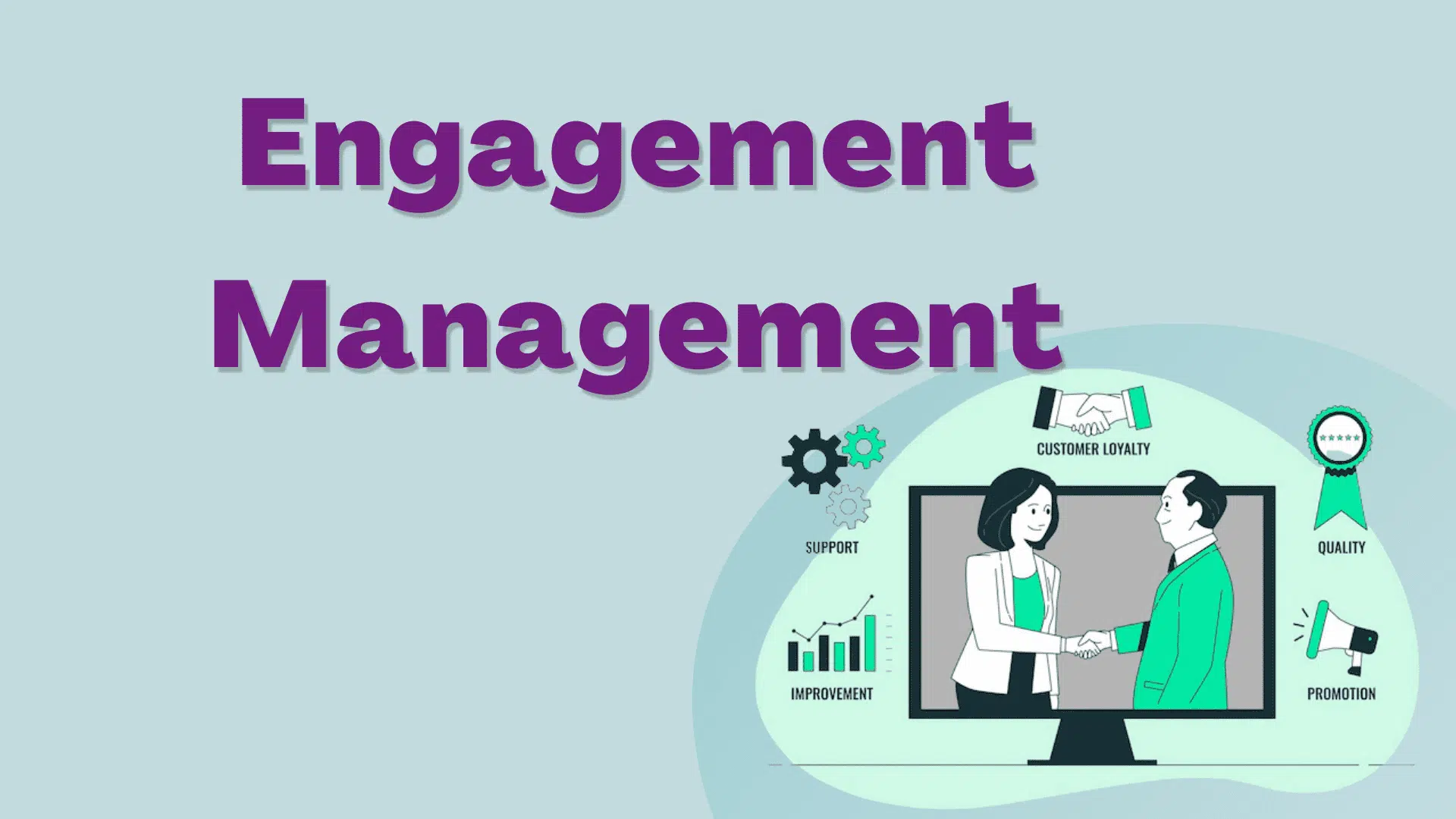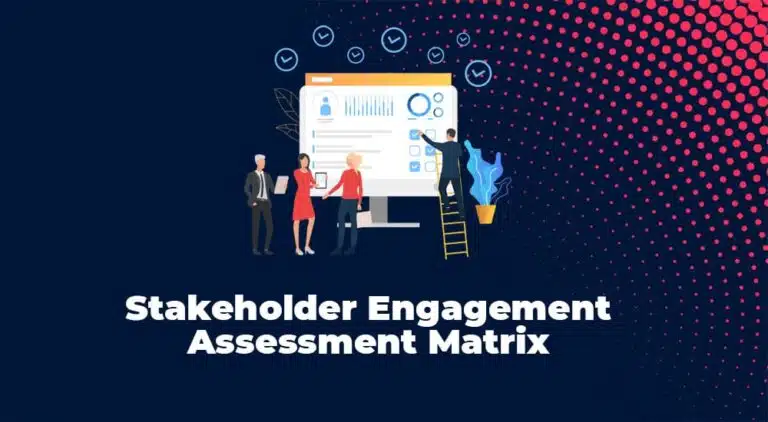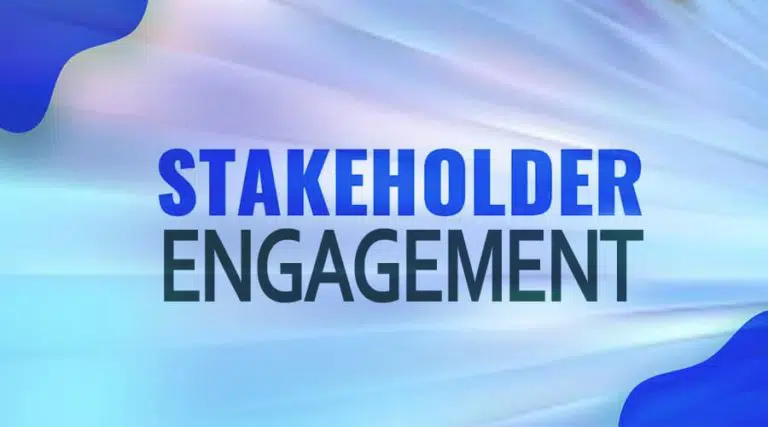Engagement management is the key to project success—especially if the project involves many stakeholders and the requirements are not initially well defined. Engagement management is a part of stakeholder management, but for complex projects with many stakeholders, engagement management must be handled meticulously throughout the project lifecycle.
This process is also sometimes known as workforce engagement management.
Today’s article will discuss engagement management in detail, its benefits, and compare it with traditional project management.
What is Engagement Management?
Engagement management allows project managers to manage project stakeholders for projects that require full stakeholder commitment and building sound relationships. The stakeholders include project team members, management, sponsors, clients, suppliers, sub-contractors, government authorities, local communities, etc.
Engagement management brings all stakeholders on the same page, aligns the goal of all stakeholders, and creates a positive and collaborative environment. Stakeholder engagement helps feel stakeholder connected with the project and valued. It helps build strong relationships.
This process ensures that the project not only delivers the deliverable to the client but also that they are happy throughout the project lifecycle so that they will keep validating the incremental deliverables. It goes beyond merely managing requirements; it also keeps stakeholders happy and fulfills client expectations.
Engagement management is a newer concept that has been popularized due to the widespread use of Agile methodologies. These newer frameworks involve customers from the beginning of the project and keep them engaged until the project is completed.
These project management frameworks deliver the deliverable quickly, add features incrementally, and improve based on the stakeholders’ feedback.
Most project management teams use project management software to manage their projects. These tools are cloud-based and provide mobile apps as well. Using the app, all stakeholders can connect all the time and communicate quickly with each other if any need arises.
Customer satisfaction is necessary for successful project completion, and engagement management helps you achieve this objective.
Benefits of Engagement Management
Engagement management offers immense benefits. It builds trust among stakeholders and helps get their support to complete the project. It highly motivates team members and provides more efficient work. It lowers the churn rate and reduces conflict.
If stakeholders are engaged, the product quality will be higher, and the project manager will not face issues while validating the deliverable, as the stakeholders’ feedback was taken into during the product development process.
Many organizations have engagement policies, but they don’t consider different aspects of the employee experience. Engagement management helps improve the employee experience.
Key Challenges of Engagement Management
Engagement management is not as easy as it may seem. A project can have hundreds or thousands of stakeholders; grouping or categorizing them is not easy. Moreover, as the project progresses, the stakeholders’ expectations may also change, so tracking and managing the changing requirements may become difficult.
Managing stakeholders is time-consuming and stressful, especially when influential stakeholders have conflicts. A project manager should use the right conflict resolution technique to solve conflicts that align with the project objectives. Interpersonal and communication skills are useful in influencing stakeholders.
How to Manage Engagement
You can follow the following steps to manage your stakeholder engagement:
#1. Define Goals
First of all, define the goal of managing stakeholders. Stakeholders’ satisfaction is paramount to successful project completion. All employees or team members must understand the goal and provide the required information to stakeholders as defined in the engagement plan.
#2. Group Stakeholders
You will group the stakeholders based on their power, influence, interest, etc. This classification helps develop an engagement management process based on the requirements.
#3. Develop Engagement Plans
The engagement plan provides information about communication throughout the project. Use best practices to develop this plan. The engagement plan will contain communication details (e.g., communication types, report format, frequency, etc.). Use cloud-based project-management platforms to engage stakeholders efficiently.
#4. Proactively Manage Stakeholders
The stakeholders’ engagement process must be proactive. Ensure that stakeholders are effectively managed and engaged in the project until its completion. Ensure that they are getting the right information, and ensure that you provide feedback to improve and develop the product further.
#5. Encourage Feedback
Encourage stakeholders to provide feedback—whether it is negative or positive. Even negative feedback is important, as it helps improve products and processes.
#6. Provide Support and Guidance
Throughout the project lifecycle, support, and guide team members to help build the product and implement client feedback. Some team members may need further training or mentoring; provide them as required.
Project Management Vs Engagement Management
Project management is about completing the project and delivering it to the client. Here, the project managers collect the project and product requirements, develop the project plan, and execute the plan, monitoring and controlling the project, delivering the project, and closing the project.
Engagement management is a part of project management. It handles stakeholder management by keeping stakeholders satisfied throughout the project lifecycle. It helps get stakeholders’ support. In Agile project-management methodology, stakeholder engagement plays a key role, as the client remains involved until the project ends.
Stakeholder Management Vs Engagement Management
In traditional project management, stakeholder management is part of project management. In traditional project management, the customer’s involvement was limited to collecting requirements and accepting the product at the end of the project.
However, in Agile project management, customer involvement continues throughout the project lifecycle; therefore, a different, more collaborative approach is needed, and more robust customer-engagement management is necessary. Engagement management focuses on managing stakeholders, collecting feedback, and implementing it immediately into the product.
Engagement Manager Vs Project Manager
In smaller projects, the project managers handle the task of engagement management, but for large and complex projects, the project will need an engagement manager. Engagement managers are sometimes also known as workforce managers. The engagement manager promotes collaboration among team members, management, clients, suppliers, and contractors. They ensure that all communication and other needs of stakeholders are met.
The project manager is responsible for managing resources and completing the project, and the engagement manager reports to the project manager.
Summary
Engagement management promotes collaboration and improves trust among stakeholders. It ensures that the necessary stakeholders are collected, they remain well informed about the project, and they are well skilled, and trained enough to complete the project and provide timely feedback to develop the product.

I am Mohammad Fahad Usmani, B.E. PMP, PMI-RMP. I have been blogging on project management topics since 2011. To date, thousands of professionals have passed the PMP exam using my resources.





